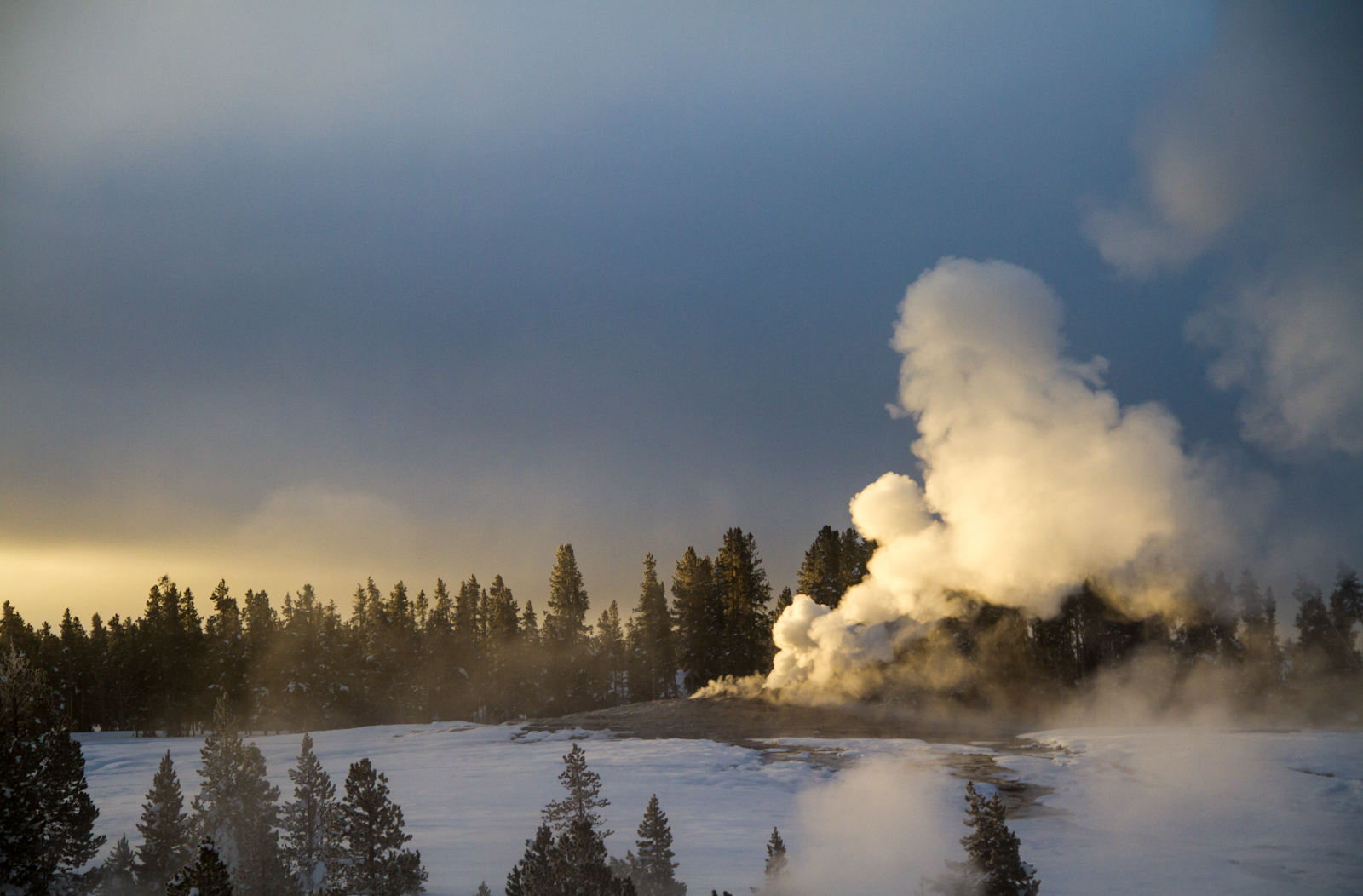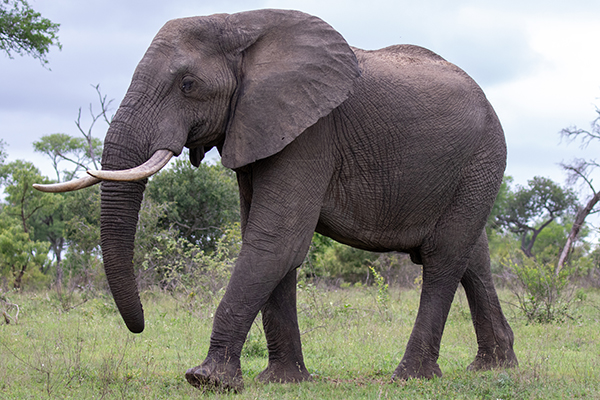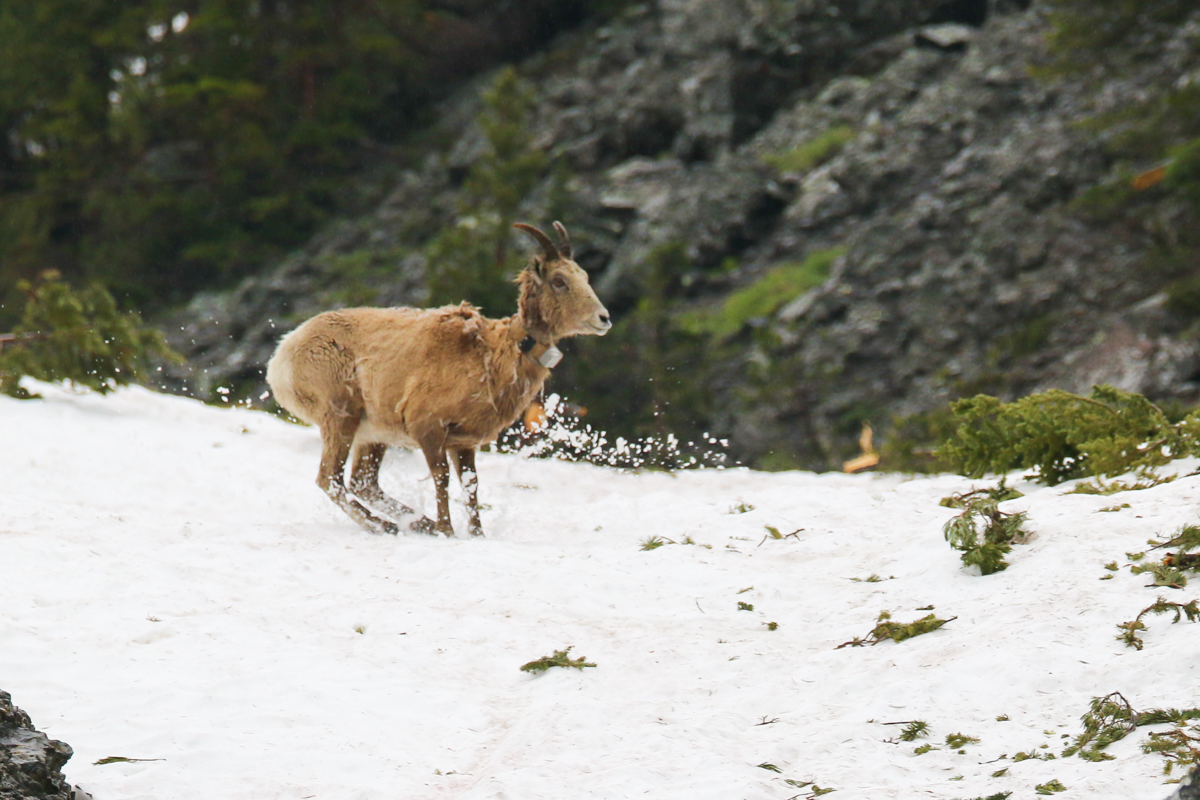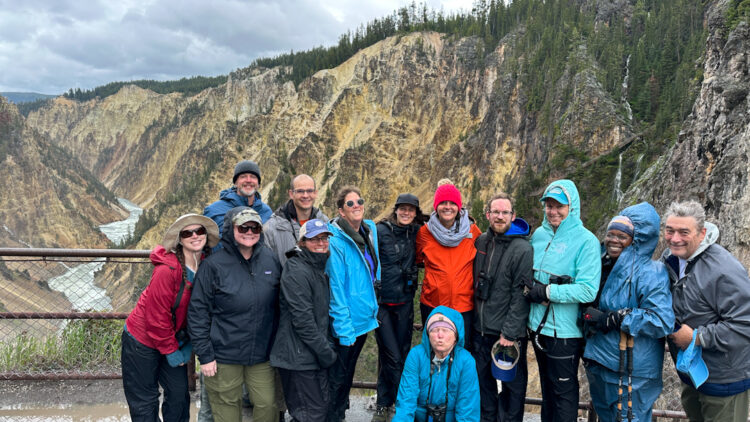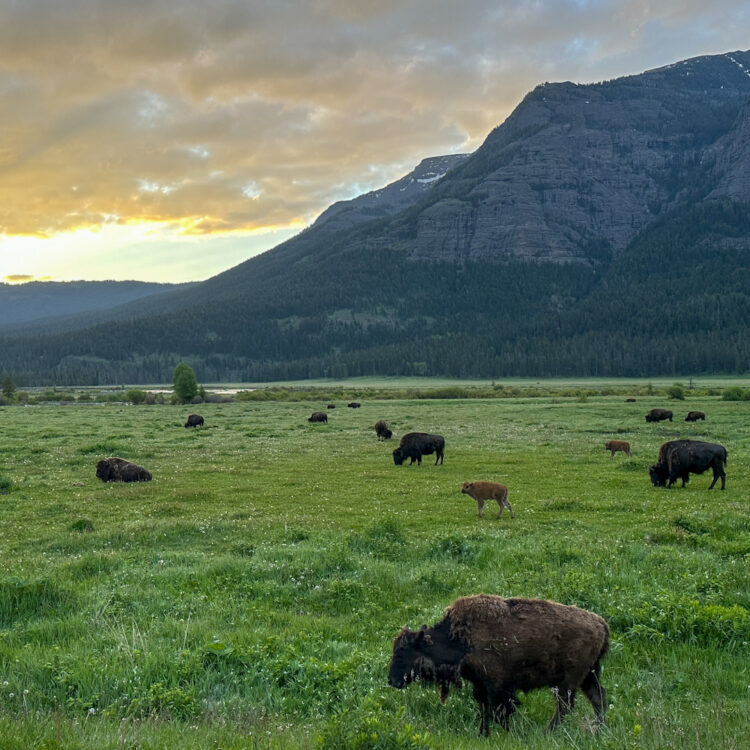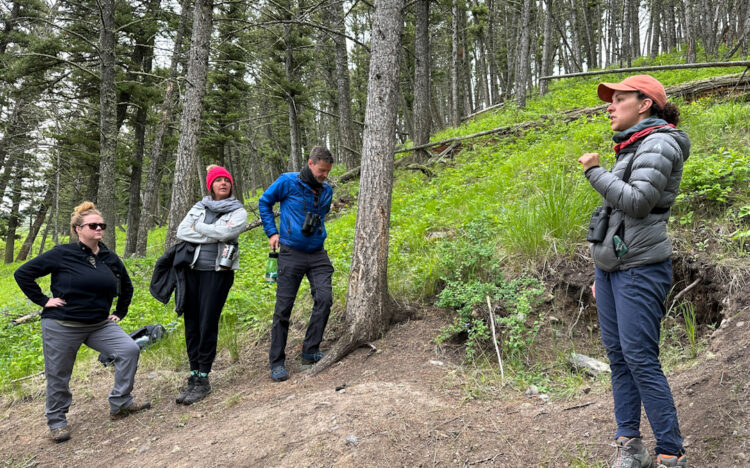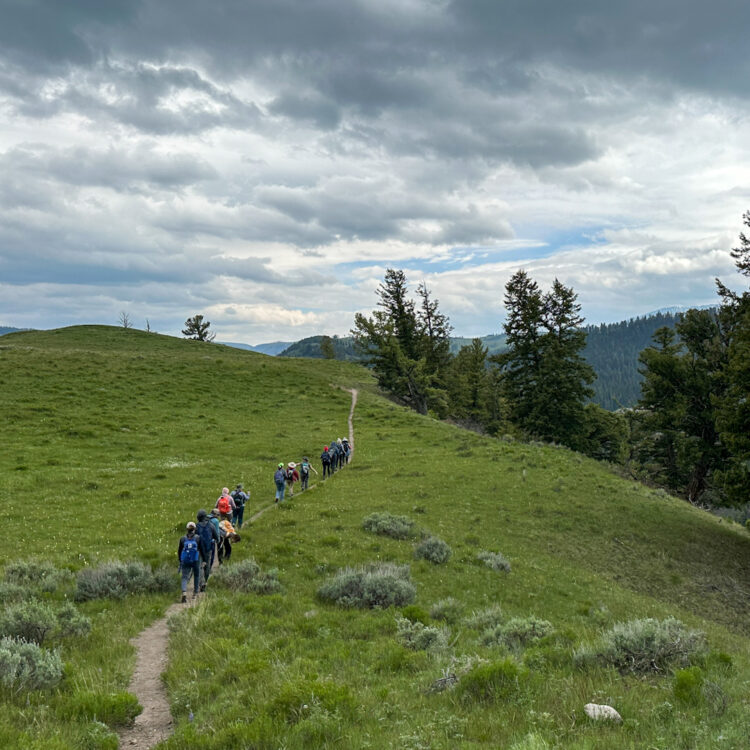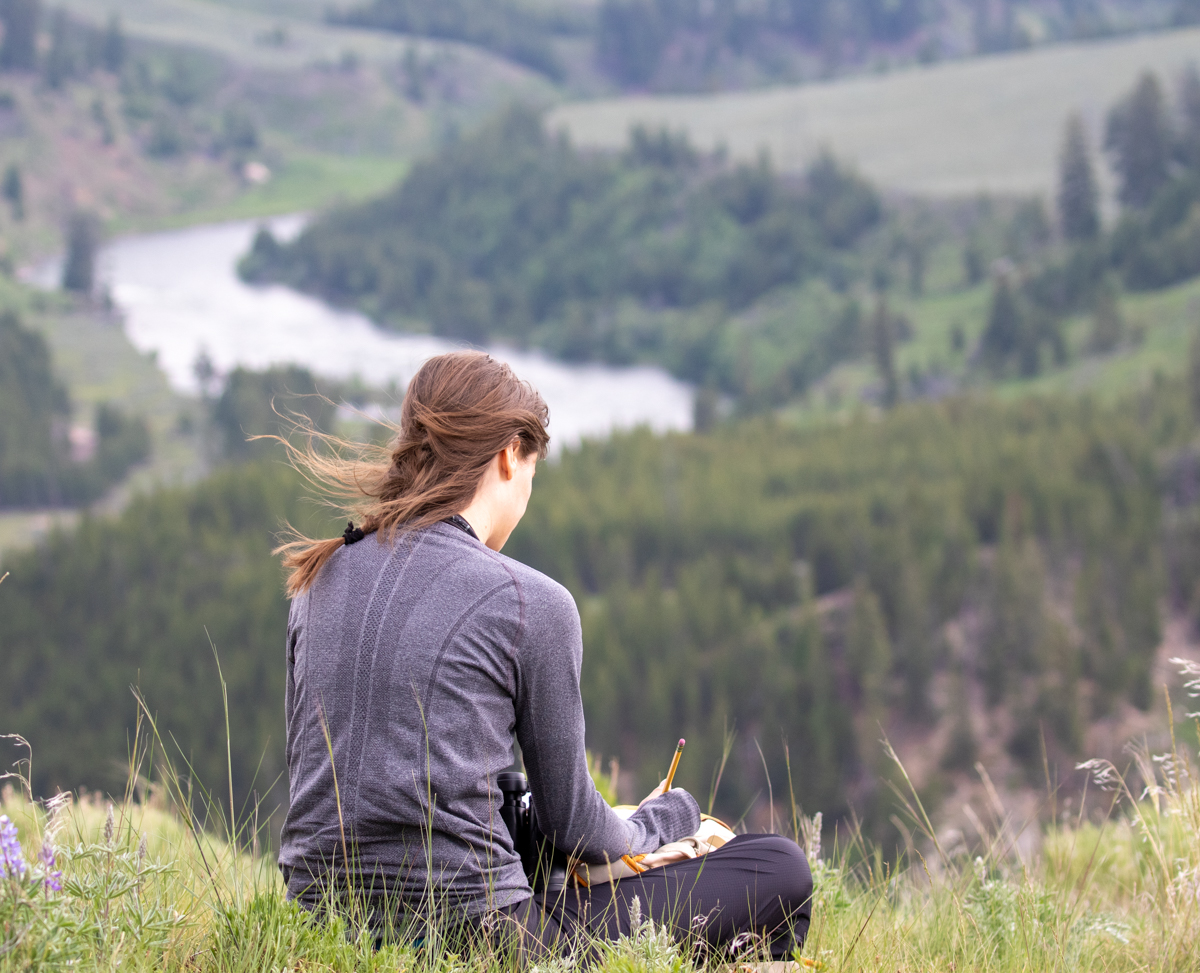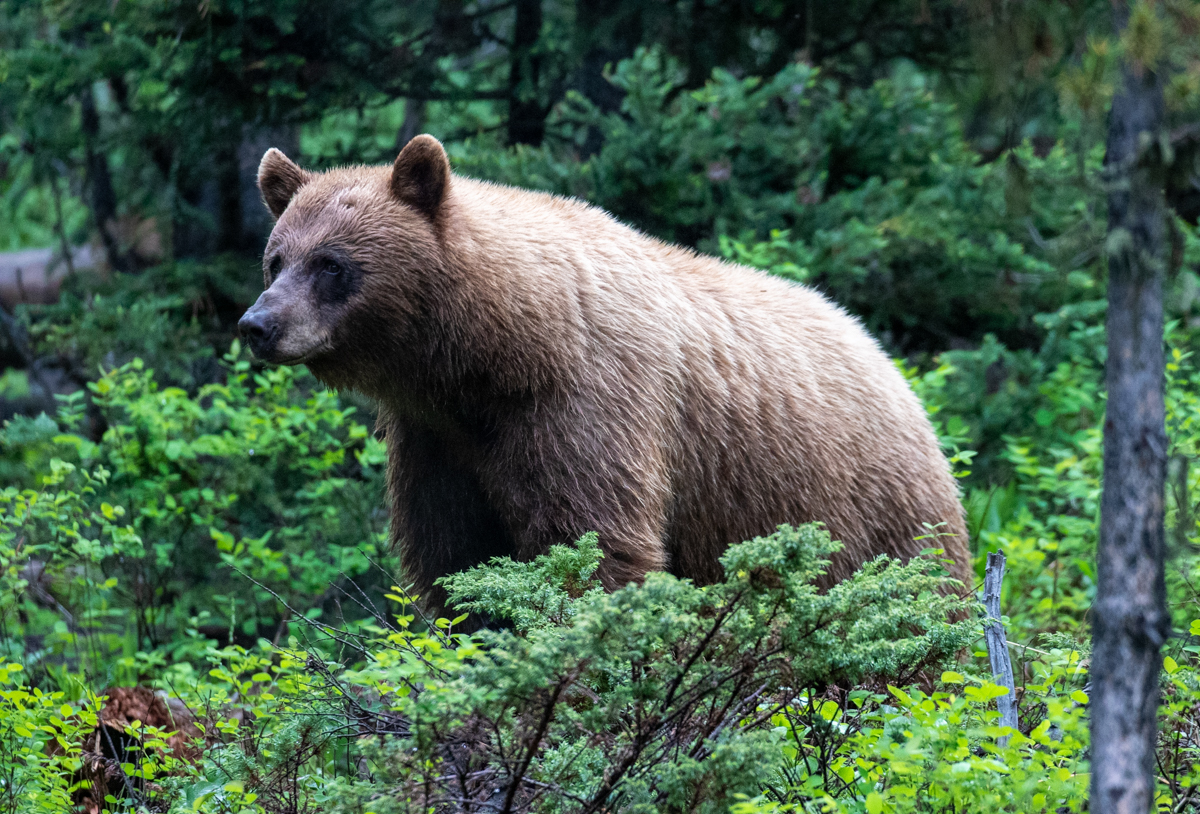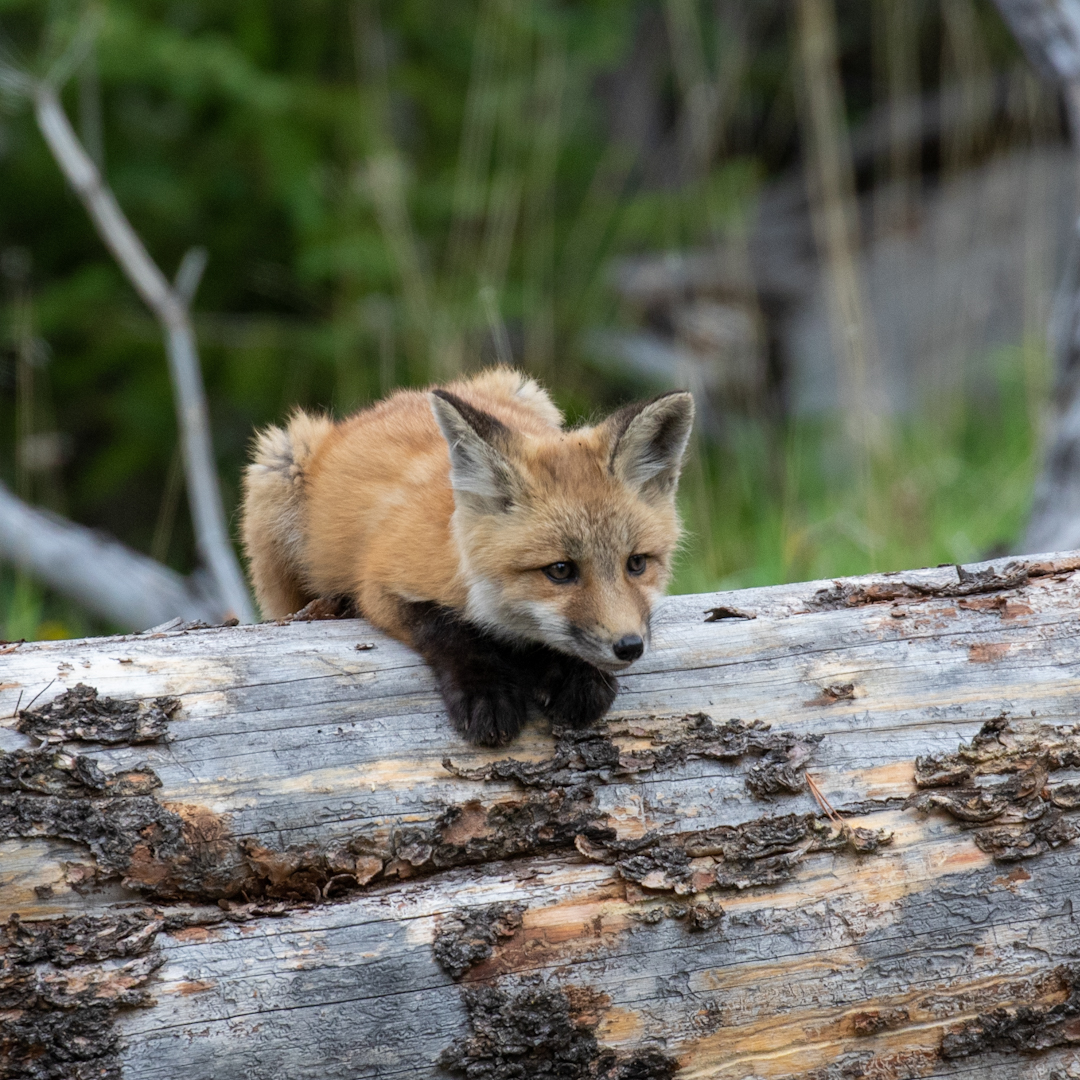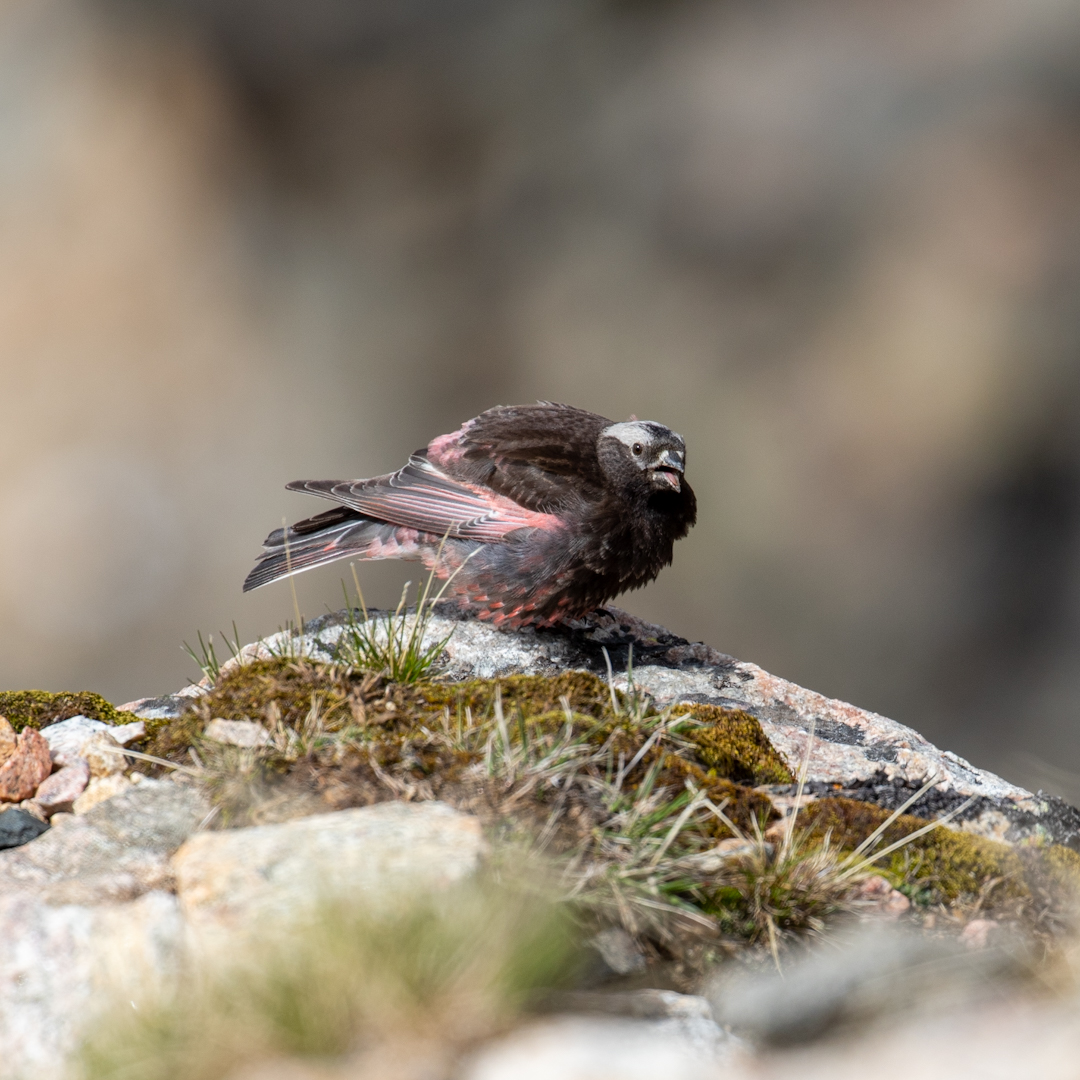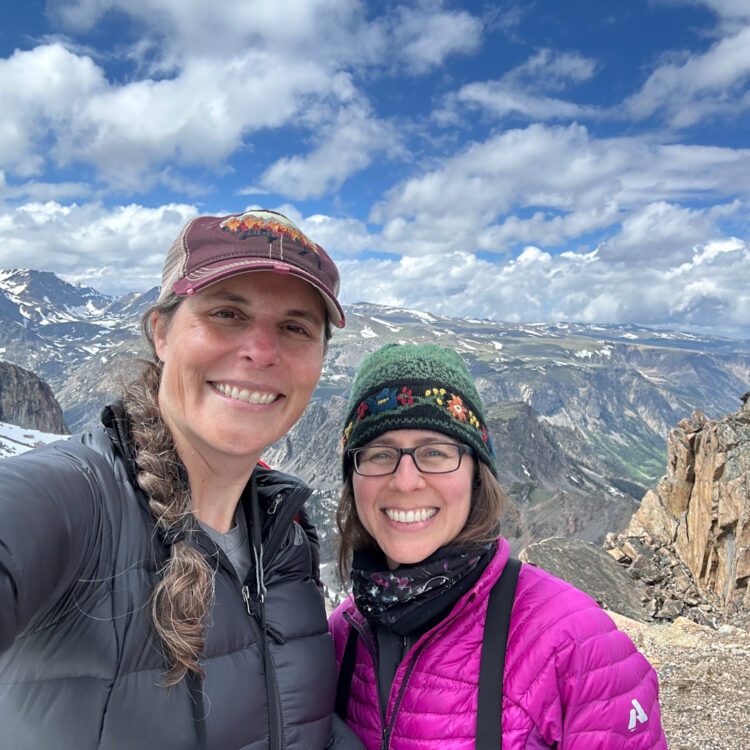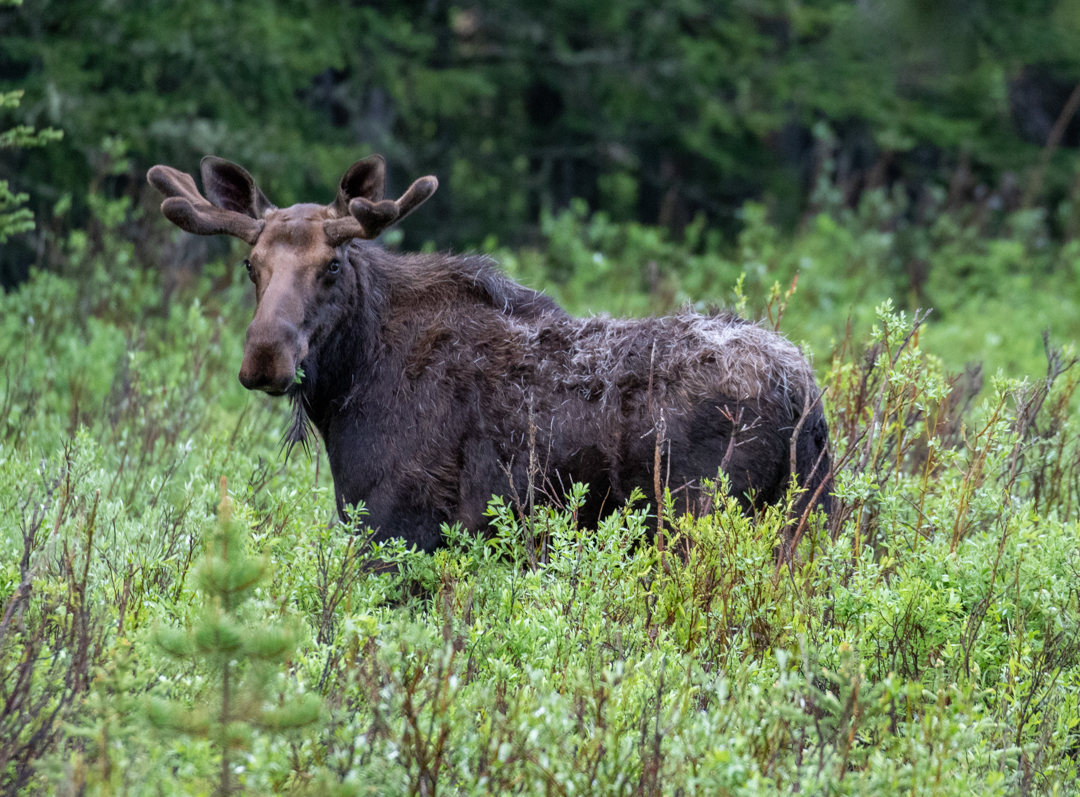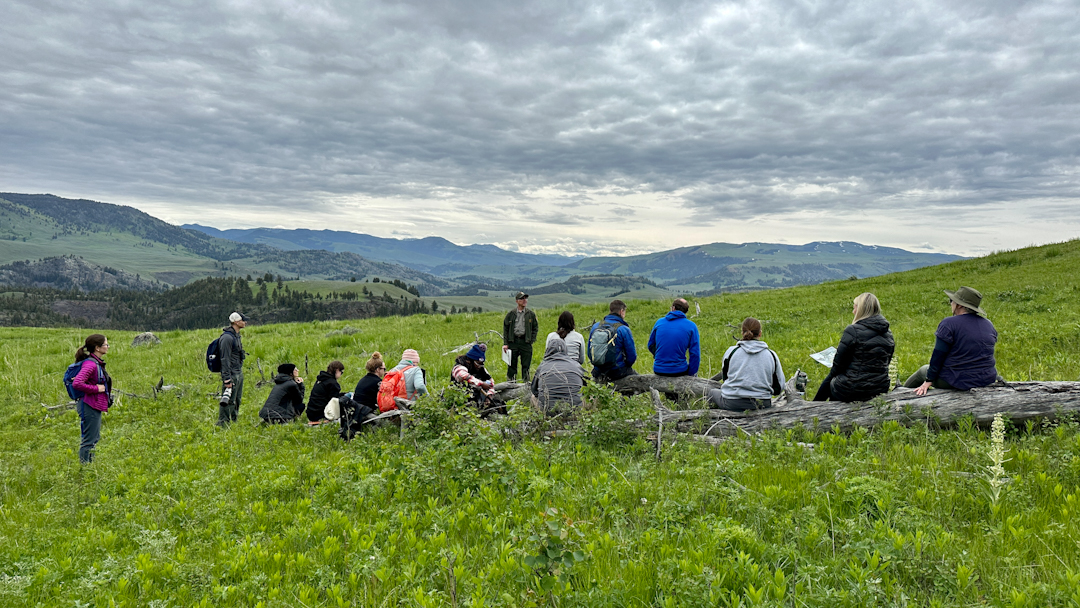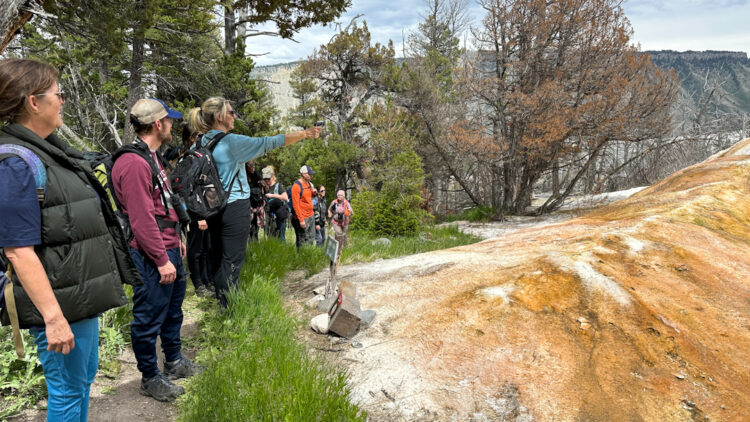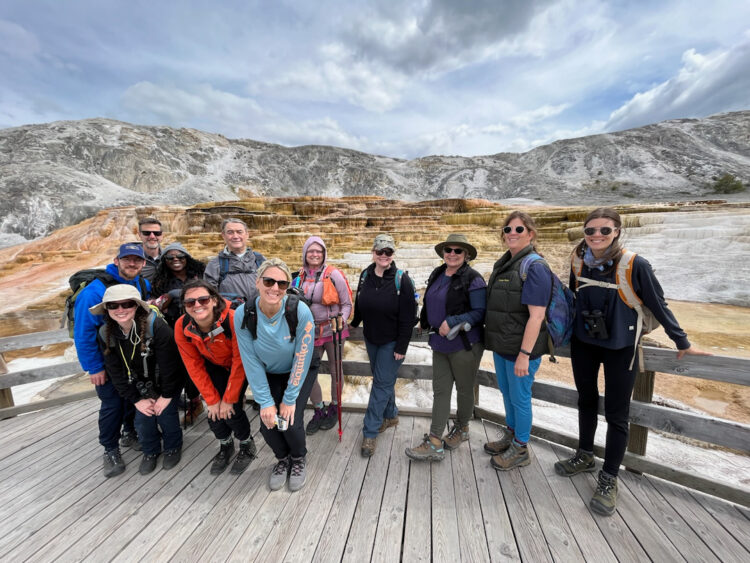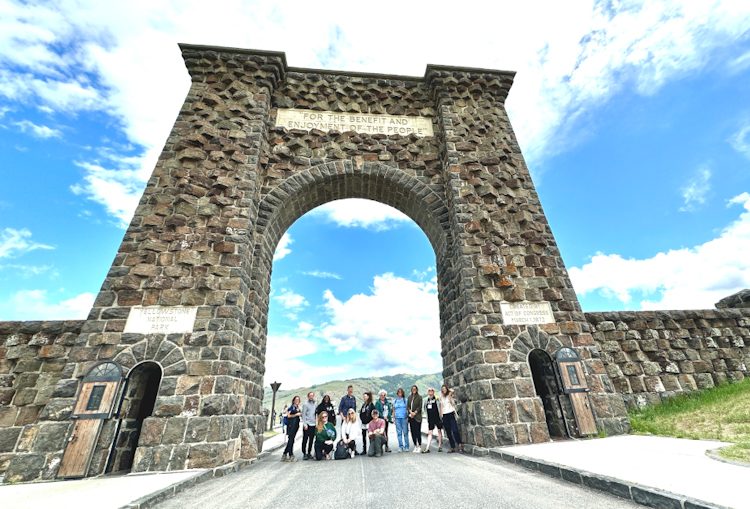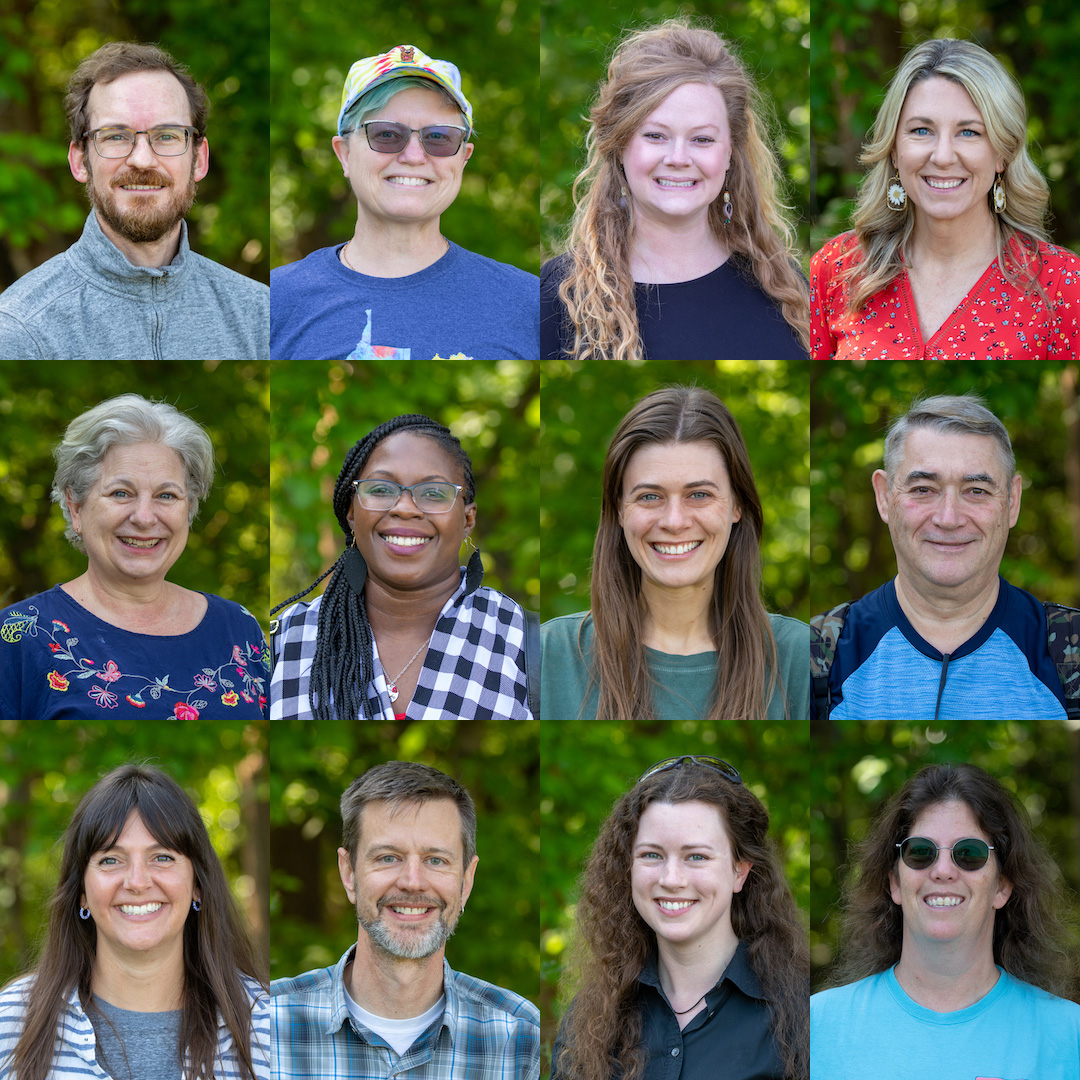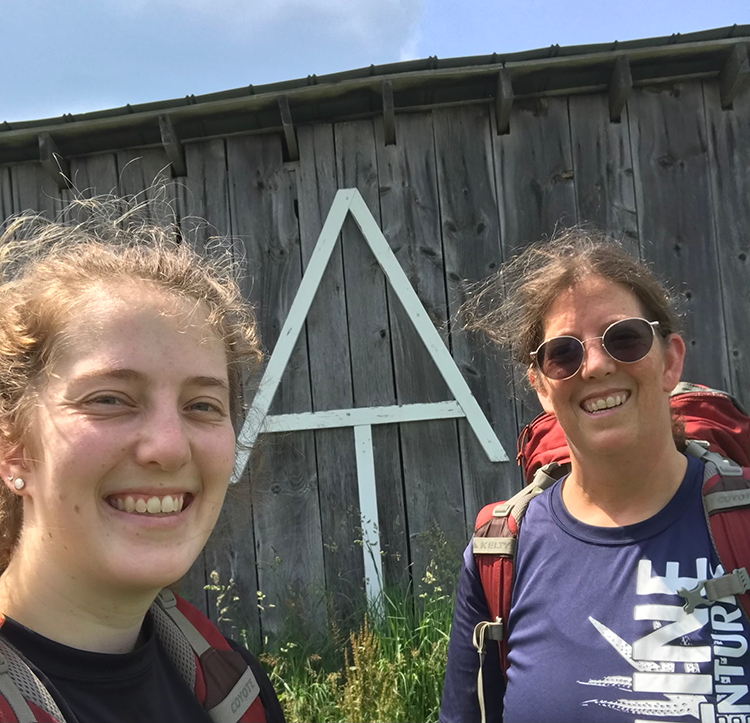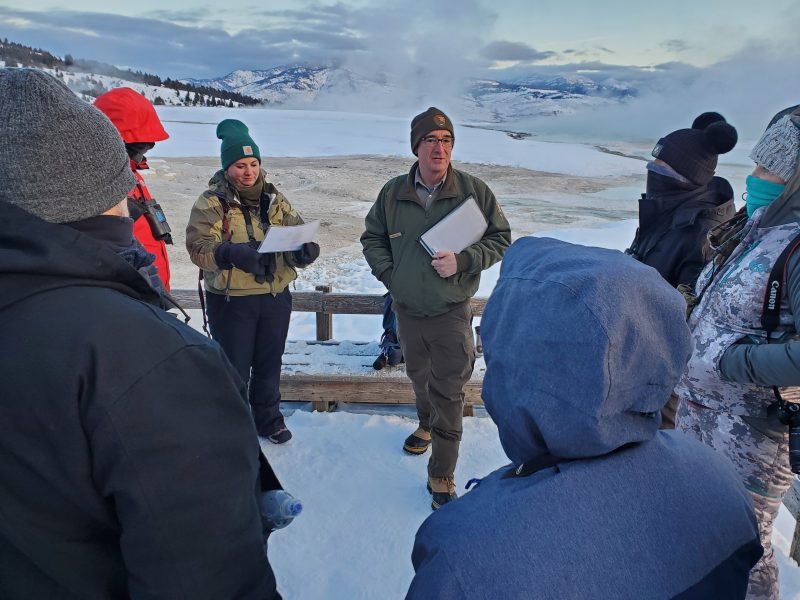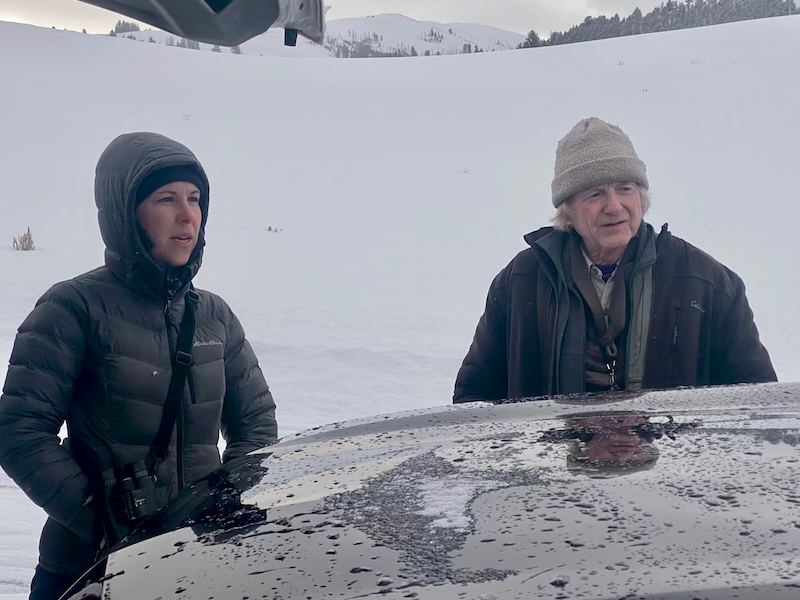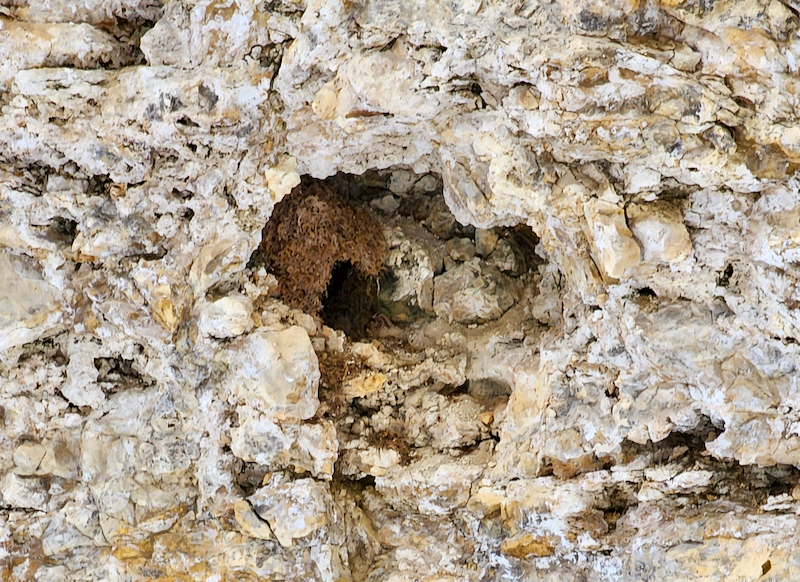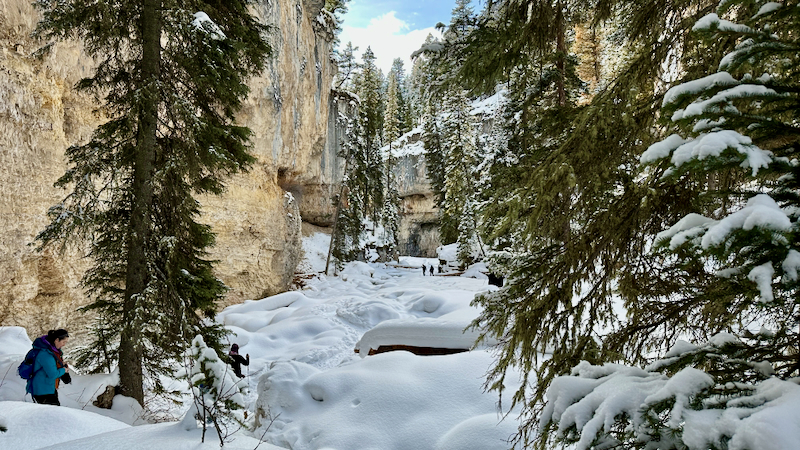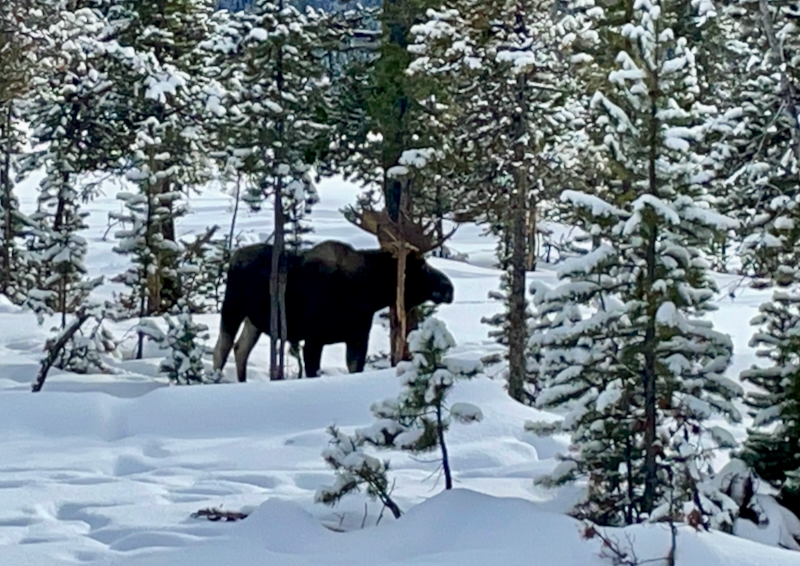“The Beauty of Yellowstone People & Places”
June 20, 2023 - 1 Comment
Good evening from Yellowstone! We are writing tonight from the magnificent Yellowstone Lake Hotel after spending five cozy nights at the Grizzly Lodge in Silver Gate. We started our migration south bright and early and headed into Lamar Valley one last time where we saw several mountain goats on the side of the road. After several stops along the way for wildlife viewing, we came upon a wolf jam — a traffic jam composed of people watching wolves. We set up our spotting scopes on a hill and quickly spotted a lone, collared wolf in the sage, who turned out to have quite a story. Also watching on the hill was Rick McIntyre, renowned wolf interpreter, author, and storyteller. We were super fortunate that he was willing to take a break in the wolf spotting to entertain us with the story of that wolf in the sage, named Wolf 907, and some of the Yellowstone wolfpacks. His passion and moving stories made the wolves so relatable to the human experience. We know these stories help us make connections to these beautiful animals as we see ourselves in them. This is another example of the beautiful generosity of all the people we have met here at the park, from experts to fellow visitors.
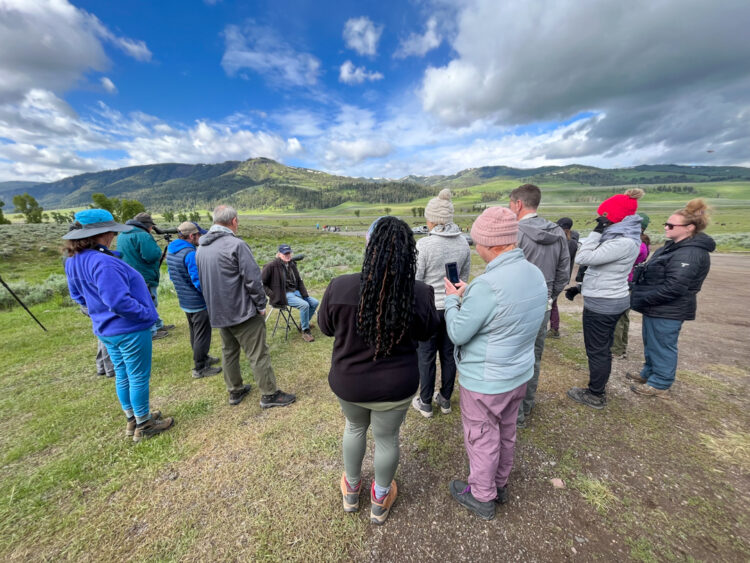
LIstening intently to Rick’s stories in Lamar Valley
The afternoon yielded a 4-mile loop hike along the south rim of the Grand Canyon of the Yellowstone. We entered what could only be described as three different worlds. First, we saw the amazing Canyon with breathtaking views, and learned about the landscape that inspired painter Thomas Moran. As we turned the corner on the trail the landscape transformed completely. Steaming mud pots reeking of sulphur fumes could be seen around us, and we were fascinated at the changing landscape and high ground temperatures caused by these features. We descended a little further down the path to a serene lake, Clear Lake, where the lodgepole pines were mirrored in the turquoise blue water. The view captivated us, and we stopped for a moment to reflect and spend some time journaling. Our hike ended with a trek along a muddy path studded with wildflowers, and we loaded into the vans for our next adventure!
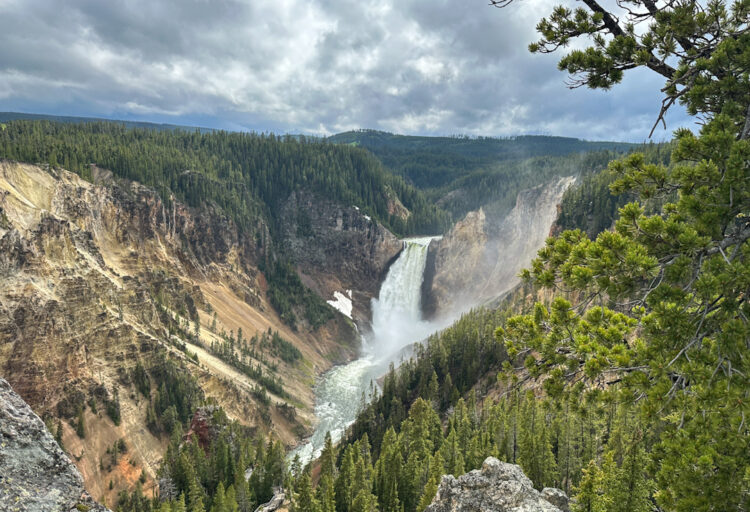
Lower Falls of the Yellowstone
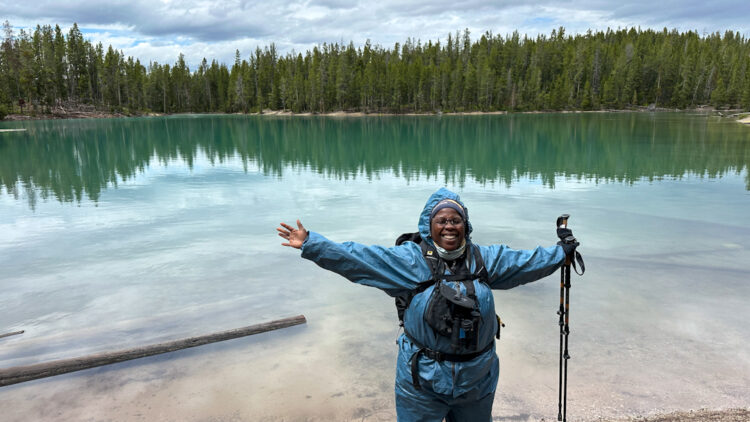
Talicia in front of beautiful Clear Lake
The thermal features of the park are stunning to behold! We joined throngs of visitors walking boardwalks alongside bubbling, gurgling, steaming, stinking pits of water and mud. There were fanciful names for some of the features, including Dragon’s Mouth Spring, which looked like the entrance to the underworld. It is actually steam and other gases exploding through the surface water, causing it to crash against the walls of the cavern. One last stop before the hotel! We congregated at a peaceful spot near the Yellowstone River to hear about Yellowstone cutthroat trout from Sharon and to visit the gorgeous harlequin ducks in the rapids.
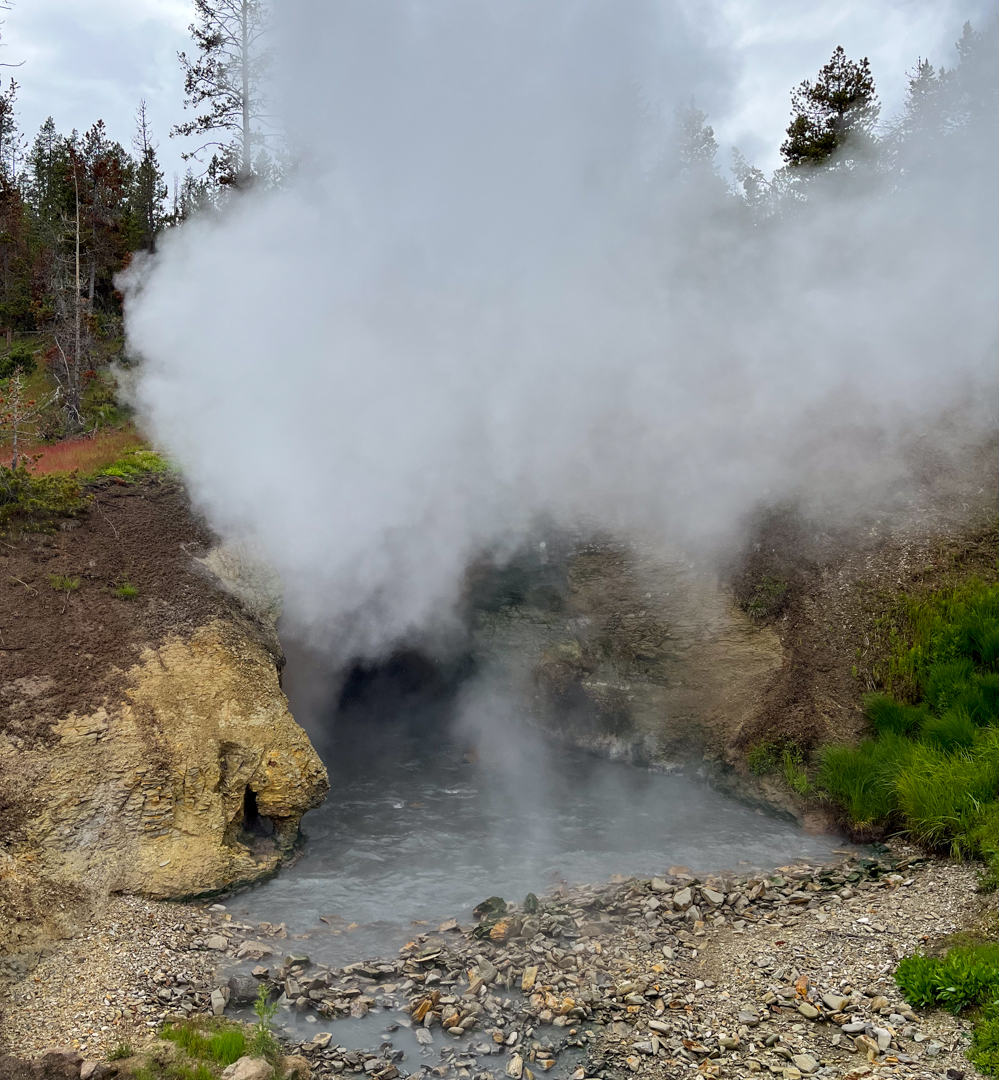
Dragon’s Mouth Spring
We were hungry and the good kind of tired after our hike and all the day’s adventures. Reflecting on the good will between the park visitors sharing information and spotting scopes, as well as their personal expertise and animal stories, we were reminded of the statement from the rangers at the Yellowstone Visitor Center that we humans are part of the Yellowstone migration story. We are so grateful to be a part of this magnificent place and its magnificent story.

